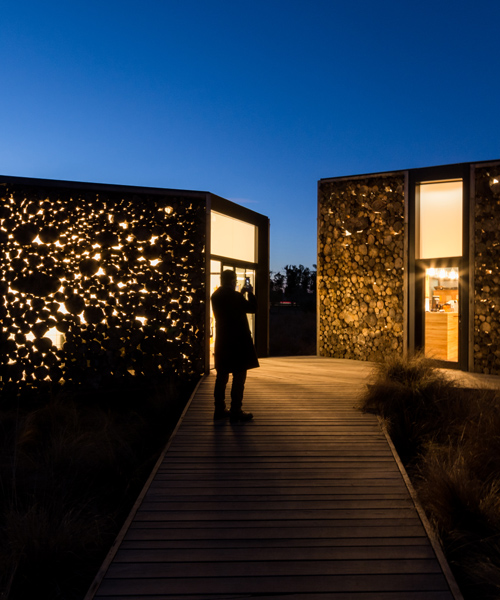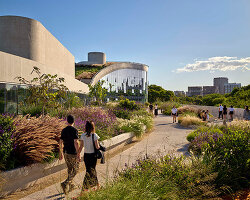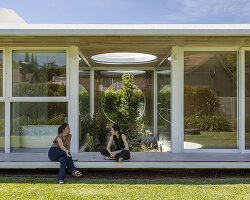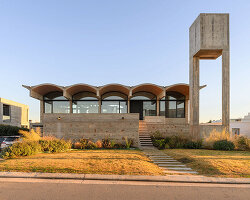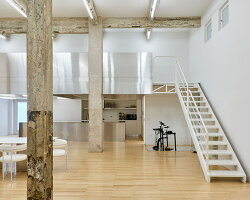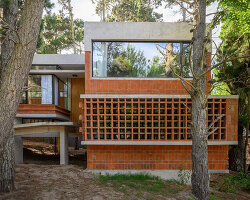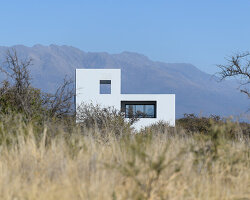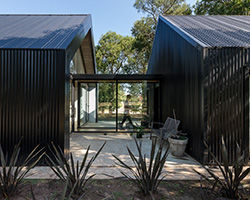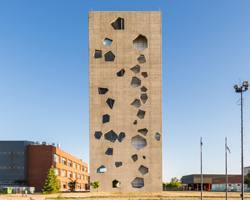photographed by gonzalo viramonte, morini arquitectos has designed a golf club house located in estancia pueblo la paz, argentina. rich in history, the site was formerly the summer residence and golfing resort for the president of the nation in the 19th century. the architects hoped to design a new intervention which would respect the site’s rich cultural significance.
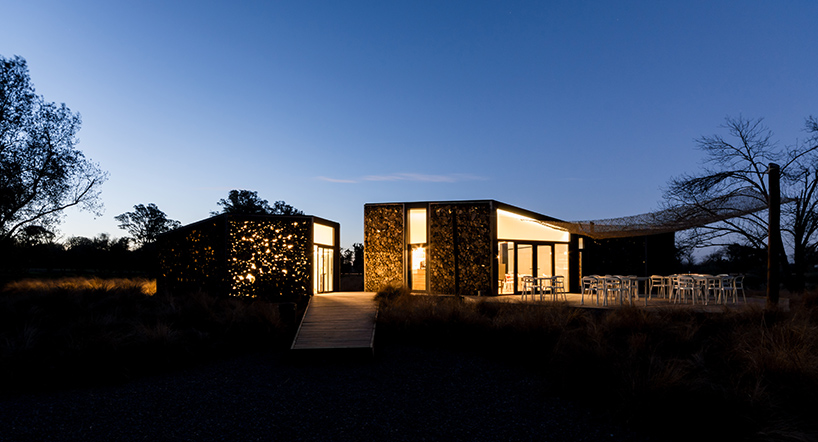
all images © gonzalo viramonte
upon visiting the site where the 18th hole of the golf course ends, morini arquitectos were fascinated by the piles of logs that were planted over a hundred years ago. they discovered that these logs have been ‘silent witnesses’ to the history of the estancia. the architects thus employ logs as a way of preserving the material heritage of the estancia, forming a bond between the old and new architecture.
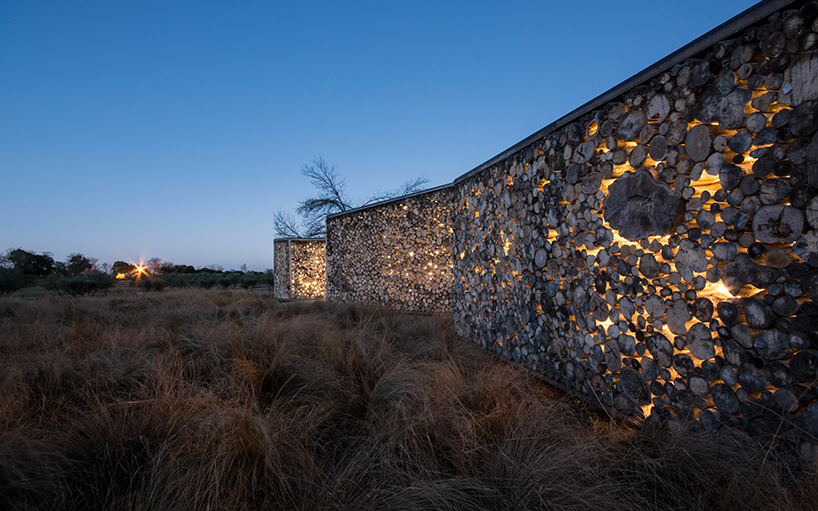
at night, the light from within radiates from the log façade
the program requirements for the clubhouse include a cafeteria, changing rooms and an administrative office. three distinct volumes connected by terraces and multiple entryways create a variety of spaces. the building’s façade was developed using more than 20,000 logs of different species from the site. bark was removed manually to avoid decomposition and the building was raised one meter from the ground with the log wall separated twenty centimeters from the envelope of the buildings for ventilation.
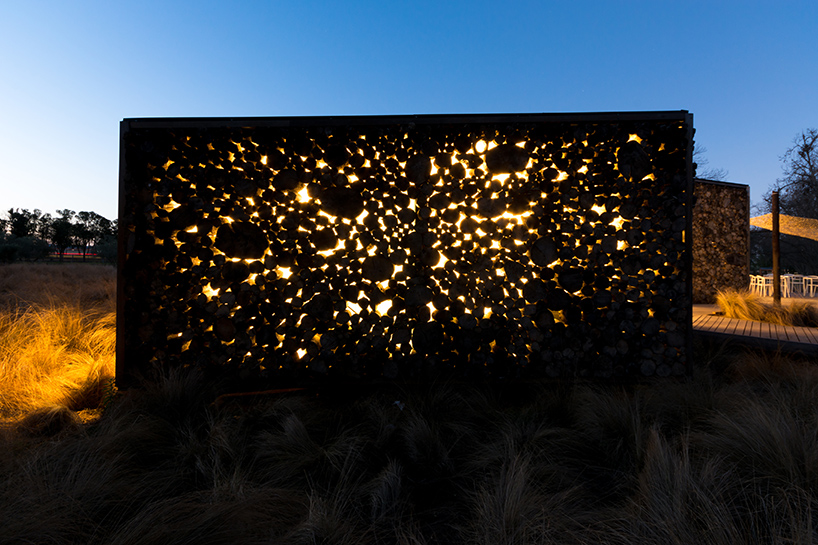
a sculptor was hired to ensure that the arrangement of the logs contributed to the building’s aesthetics
the façade was designed with the help of a sculptor who ensured that the logs were arranged in such a way as to create a light and transparent appearance. all internal walls were built from glass to ensure a play of lights between night and day. while natural light enters freely during the day, the building seems to glow at night as light radiates to the exterior. the club house is a constantly changing building. not only does the lighting change the façade from day to night, but as the logs age they change colors slowly giving life to the building.

the exterior terraces provide enjoyable outdoor spaces

distinct walkways and entryways create a dynamic space
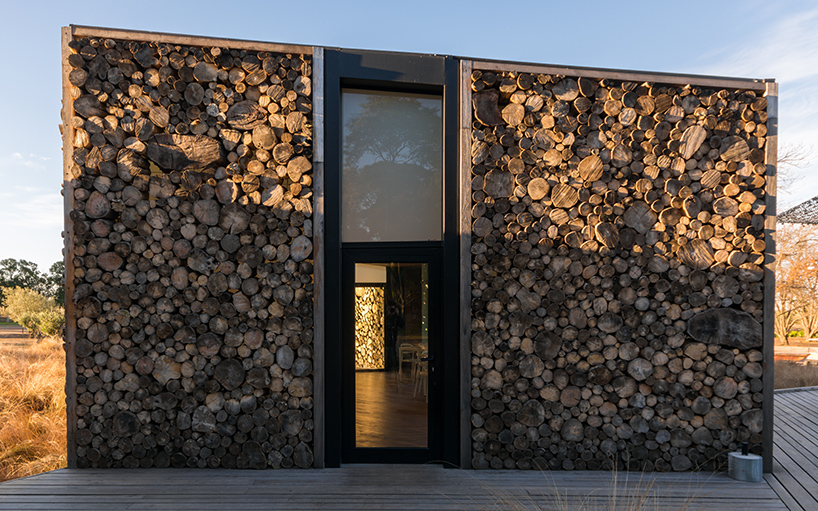
the lighting within changes throughout the day
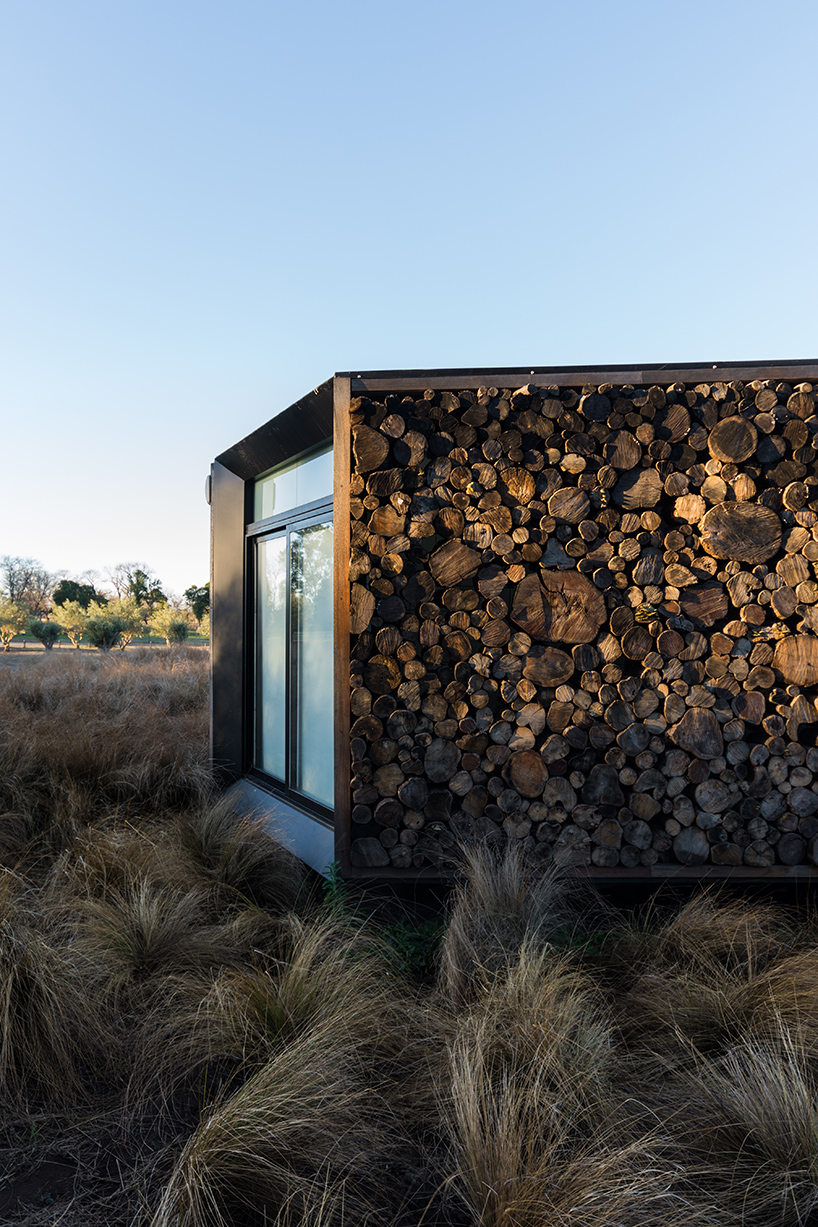
all interior walls are made of glass

the building respects the material heritage of the landscape
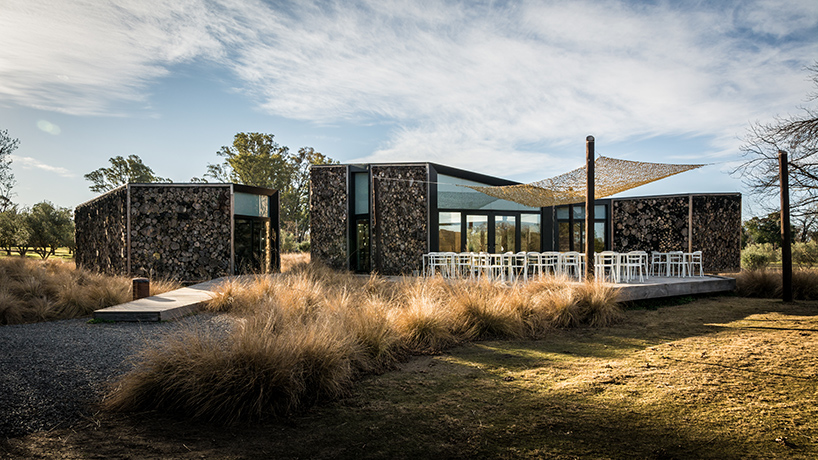
over 20,000 logs were used to develop the façade
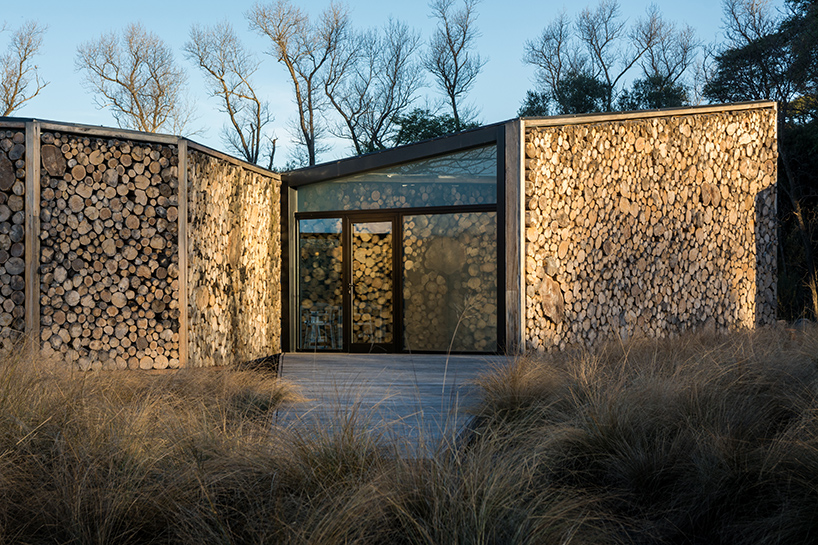
the building appears to camouflage with the surrounding vegetation
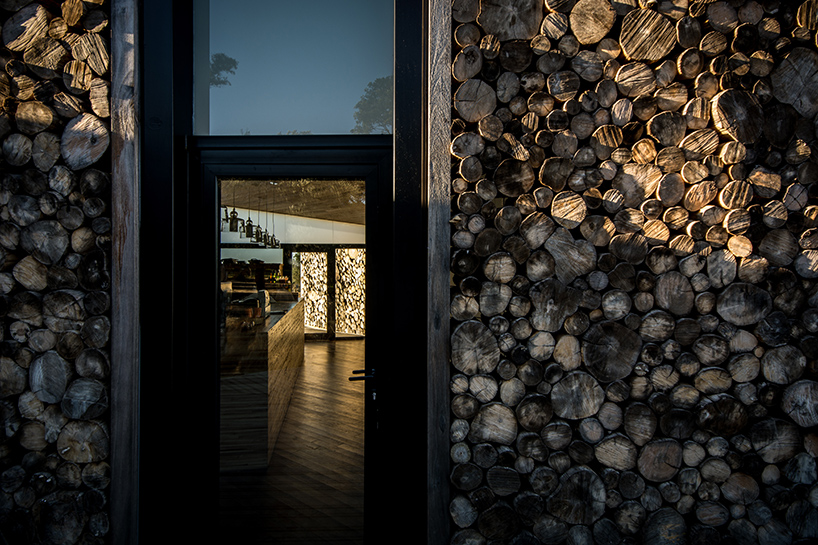
wooden textures are employed throughout the space
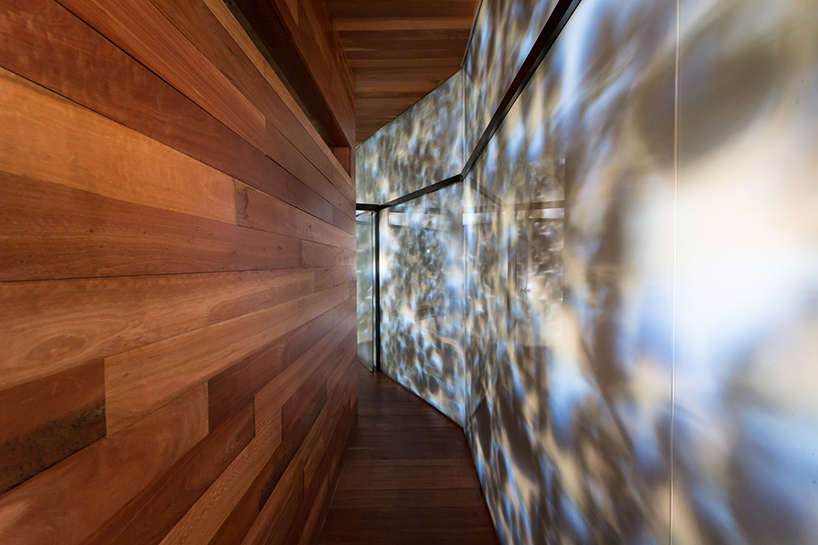
the pattern from the logs creates a filtered light effect within
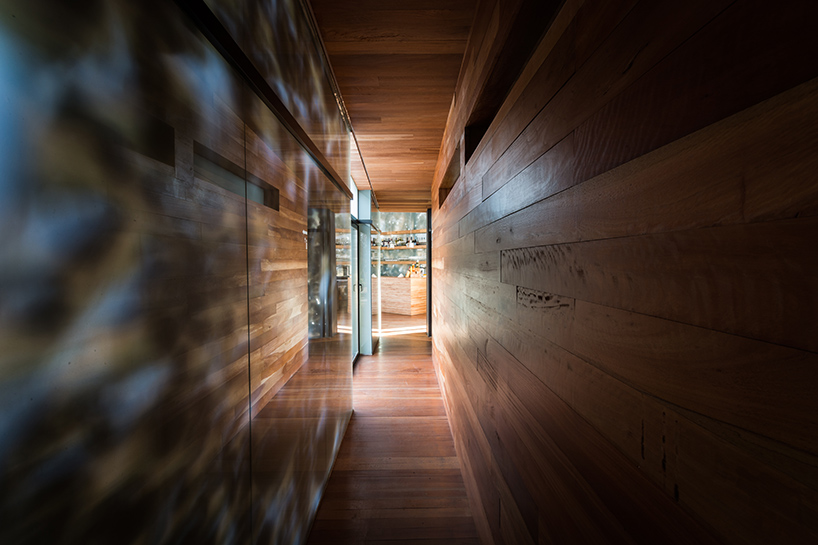
the interior finishes employ local materials
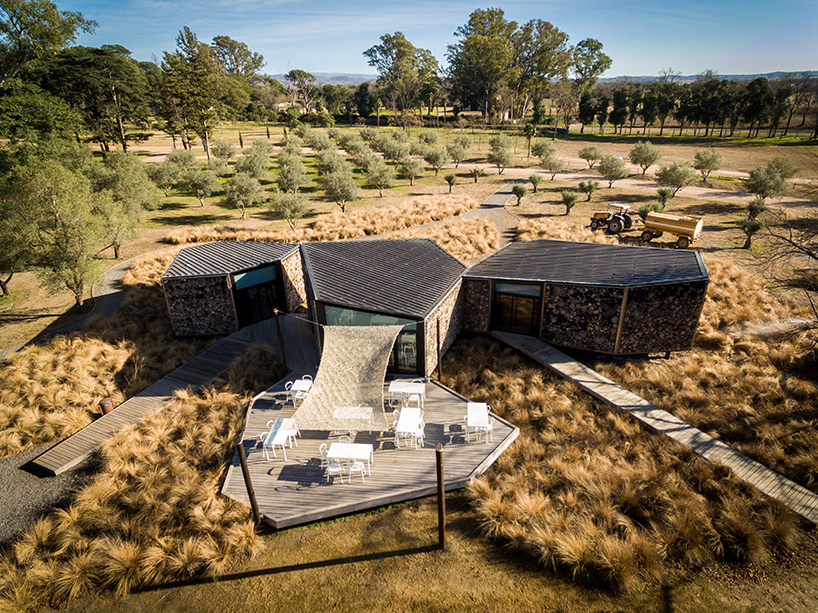
three distinct volumes are connected through terraces and multiple entryways
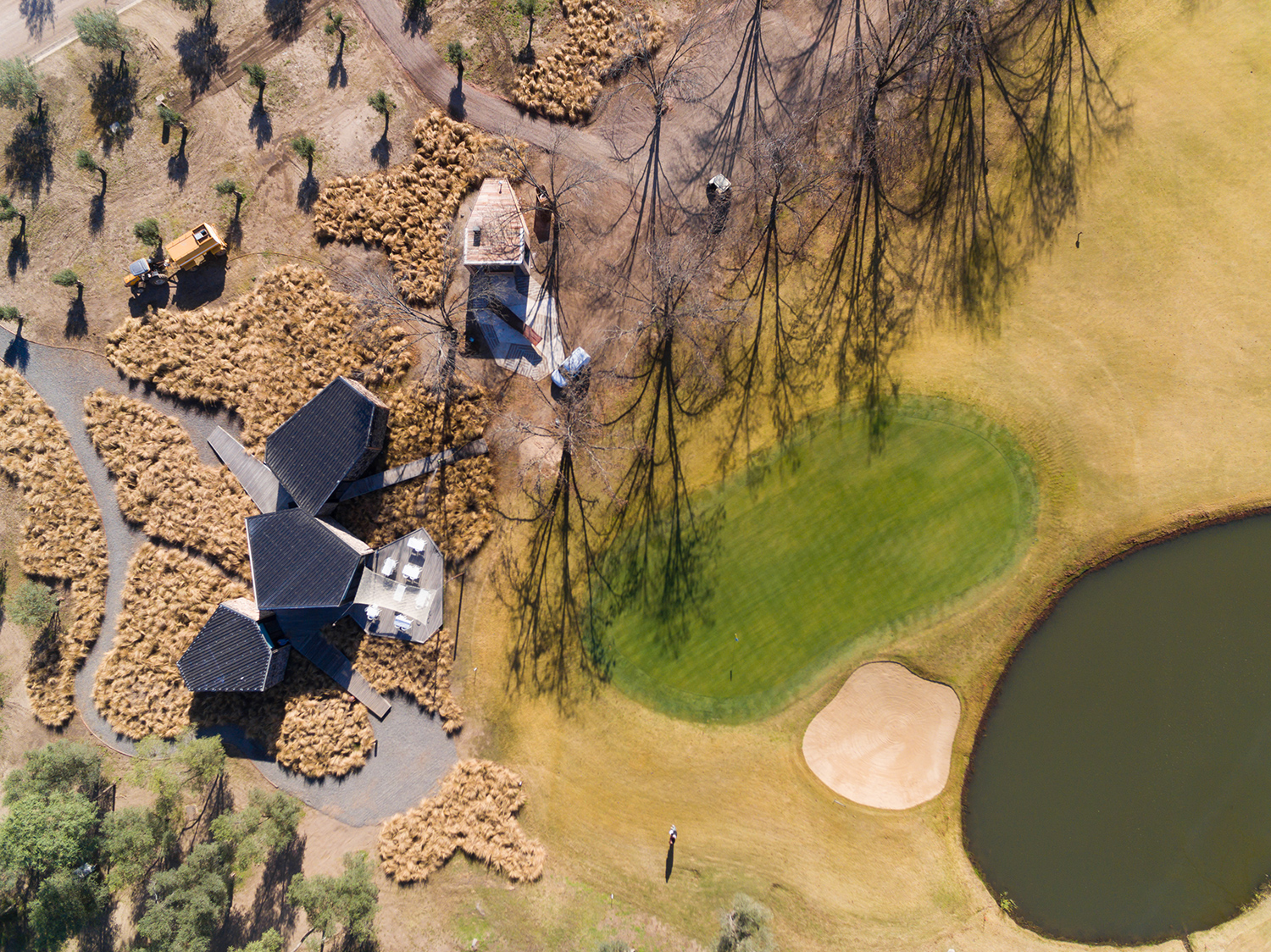
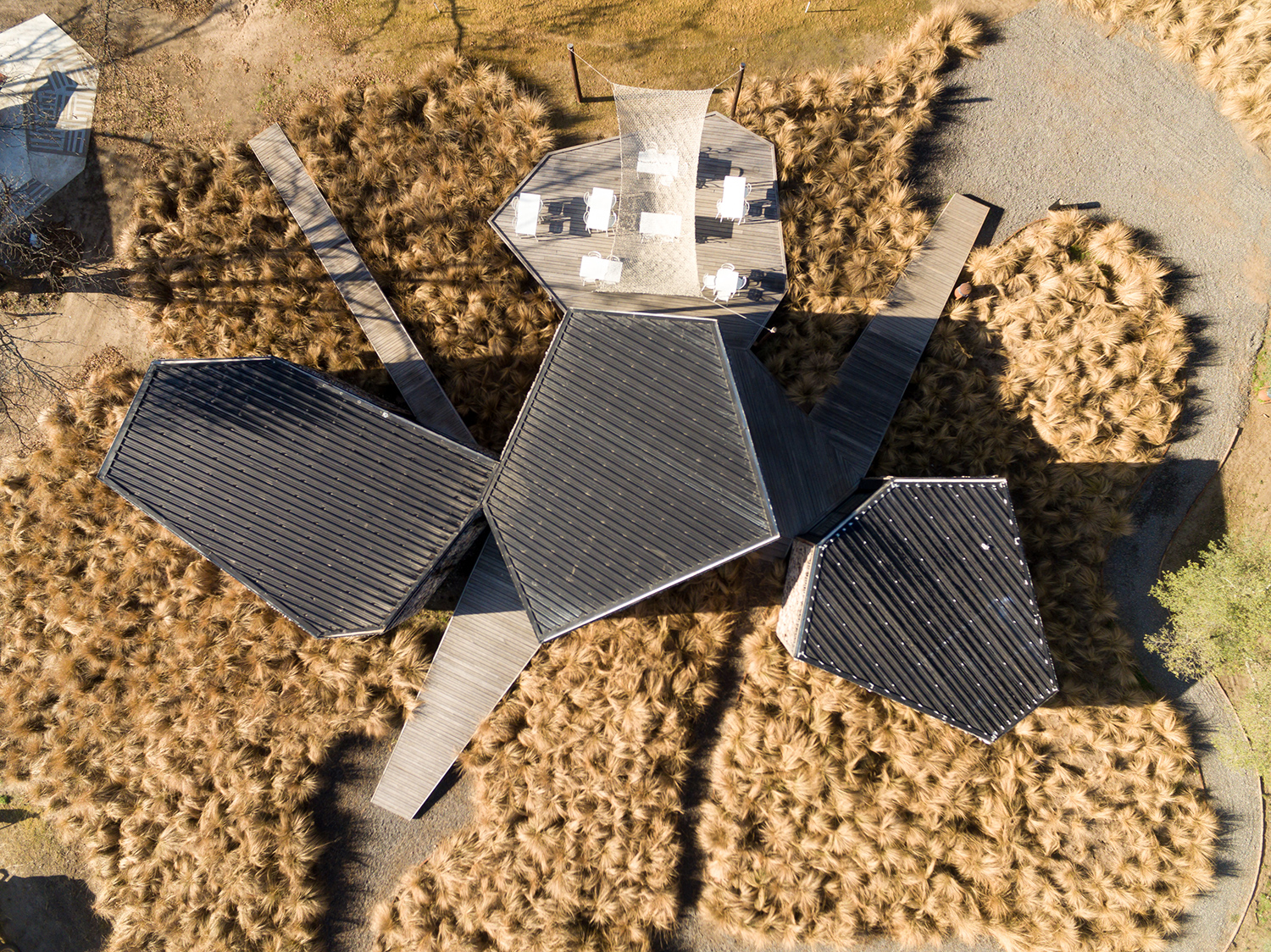

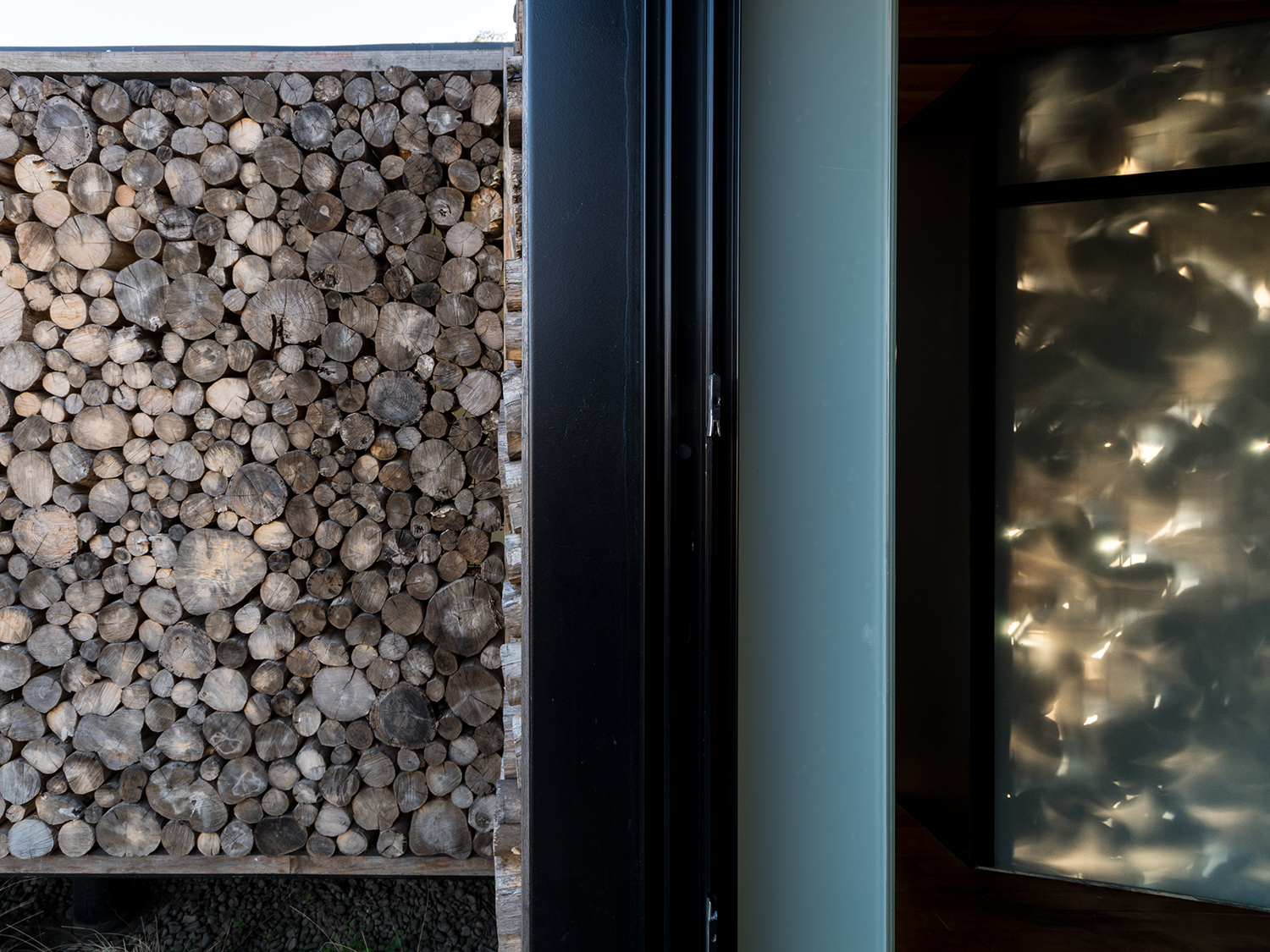
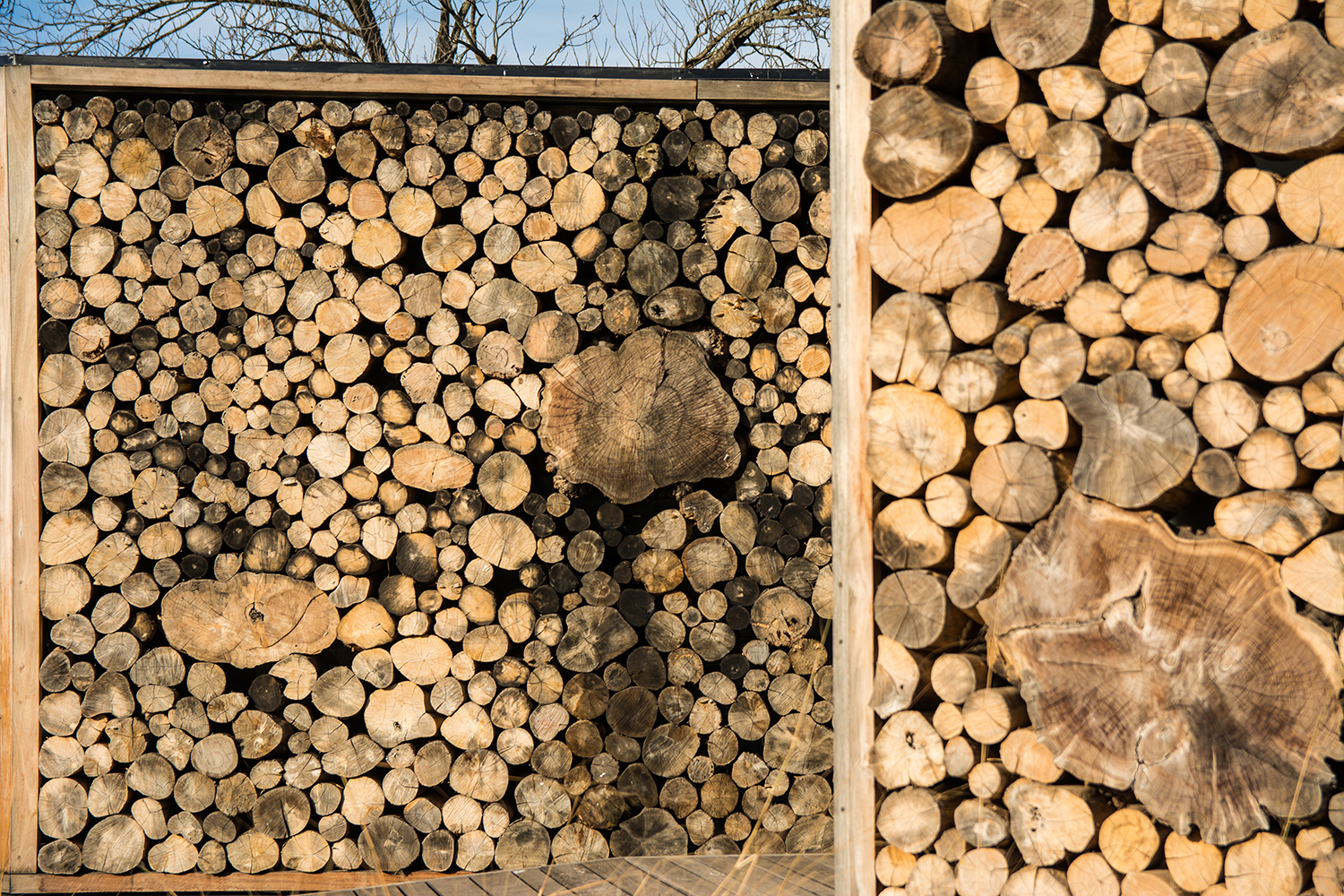
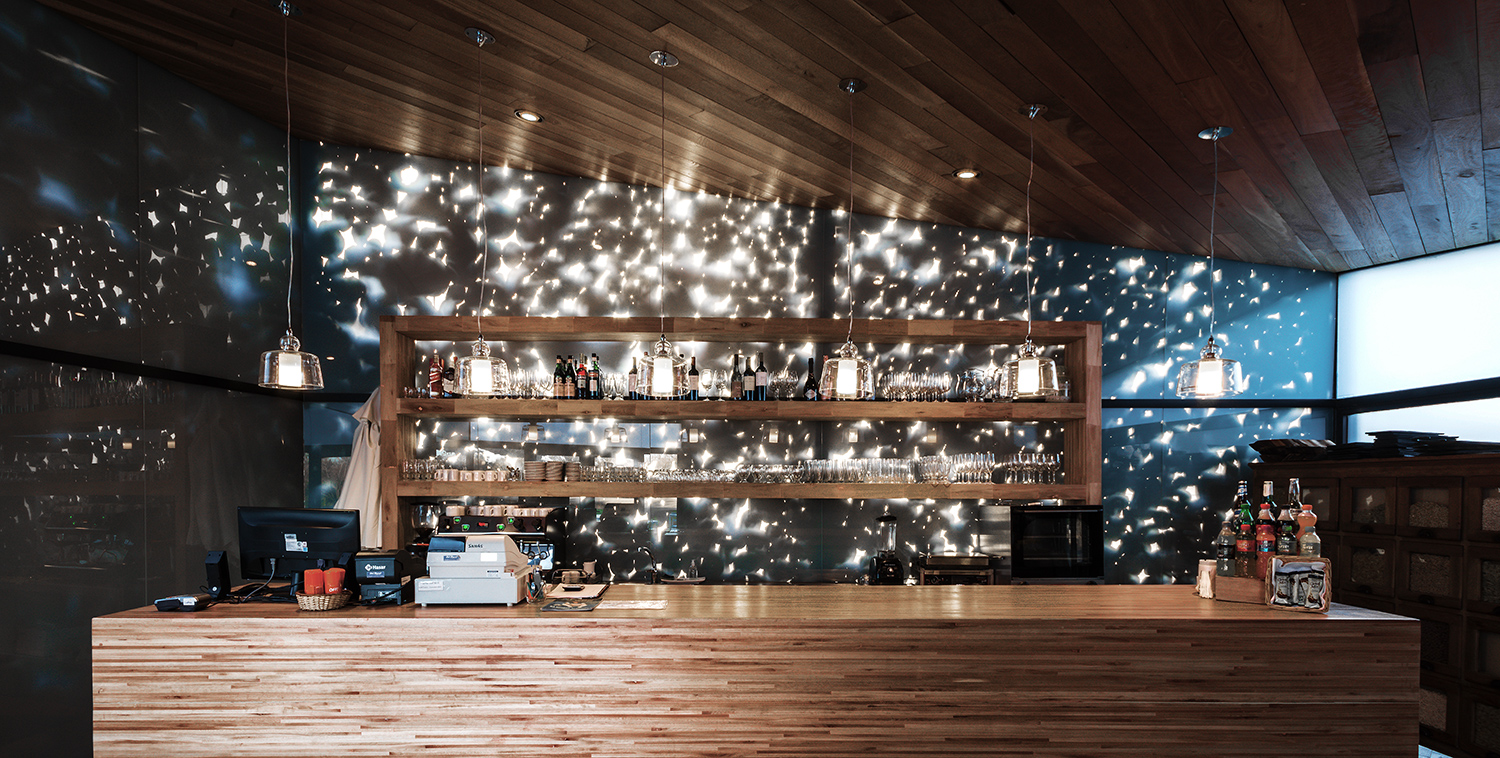
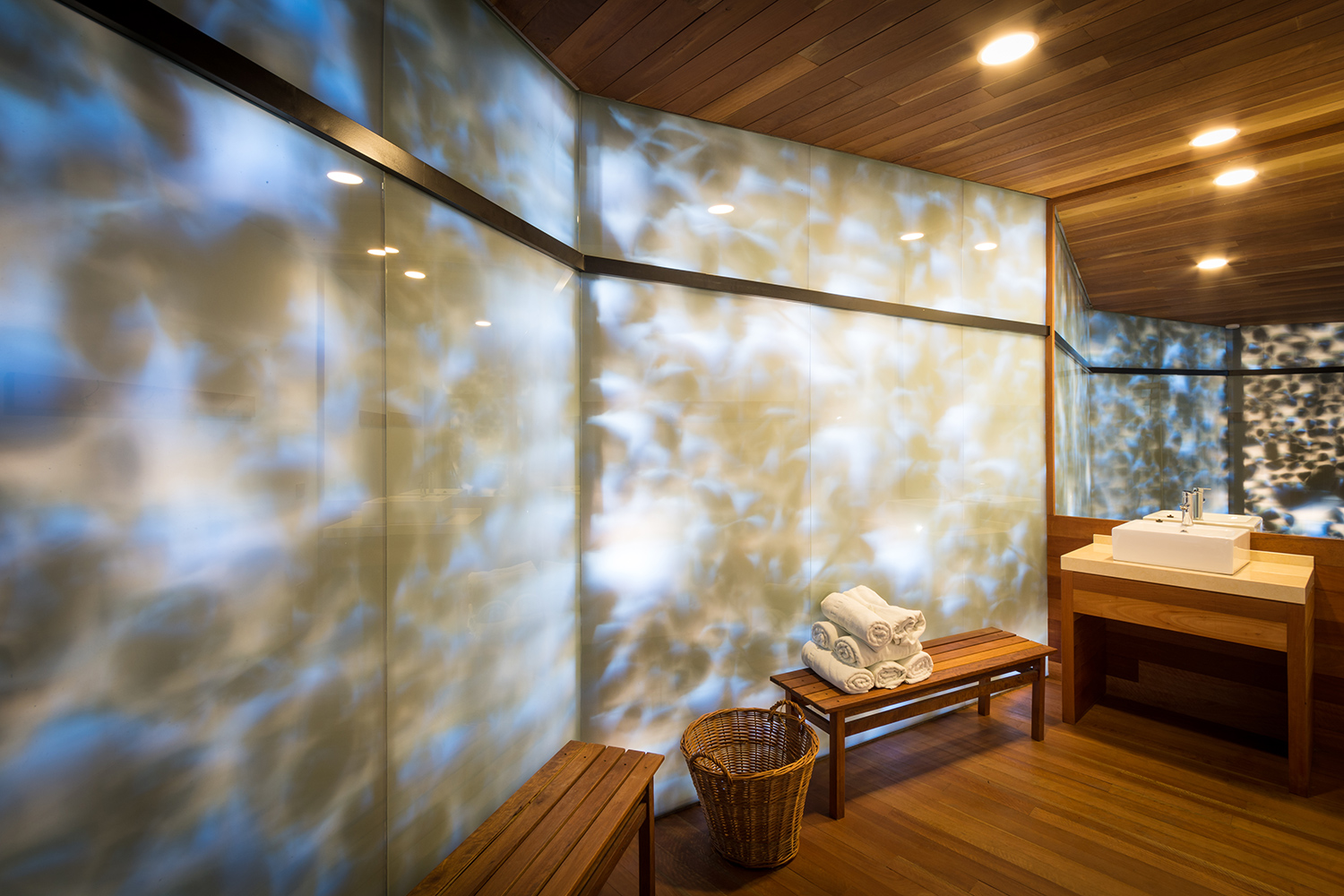
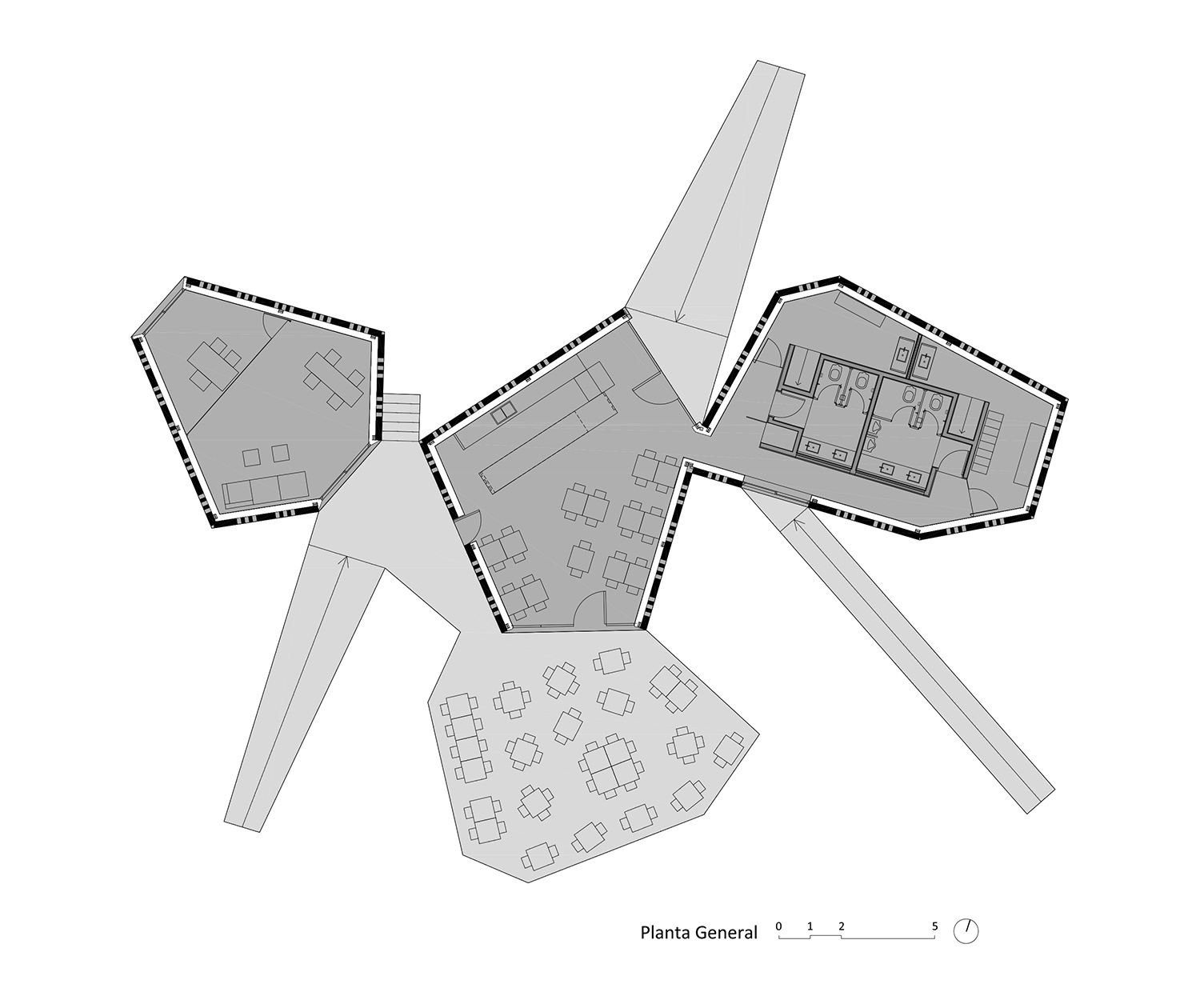
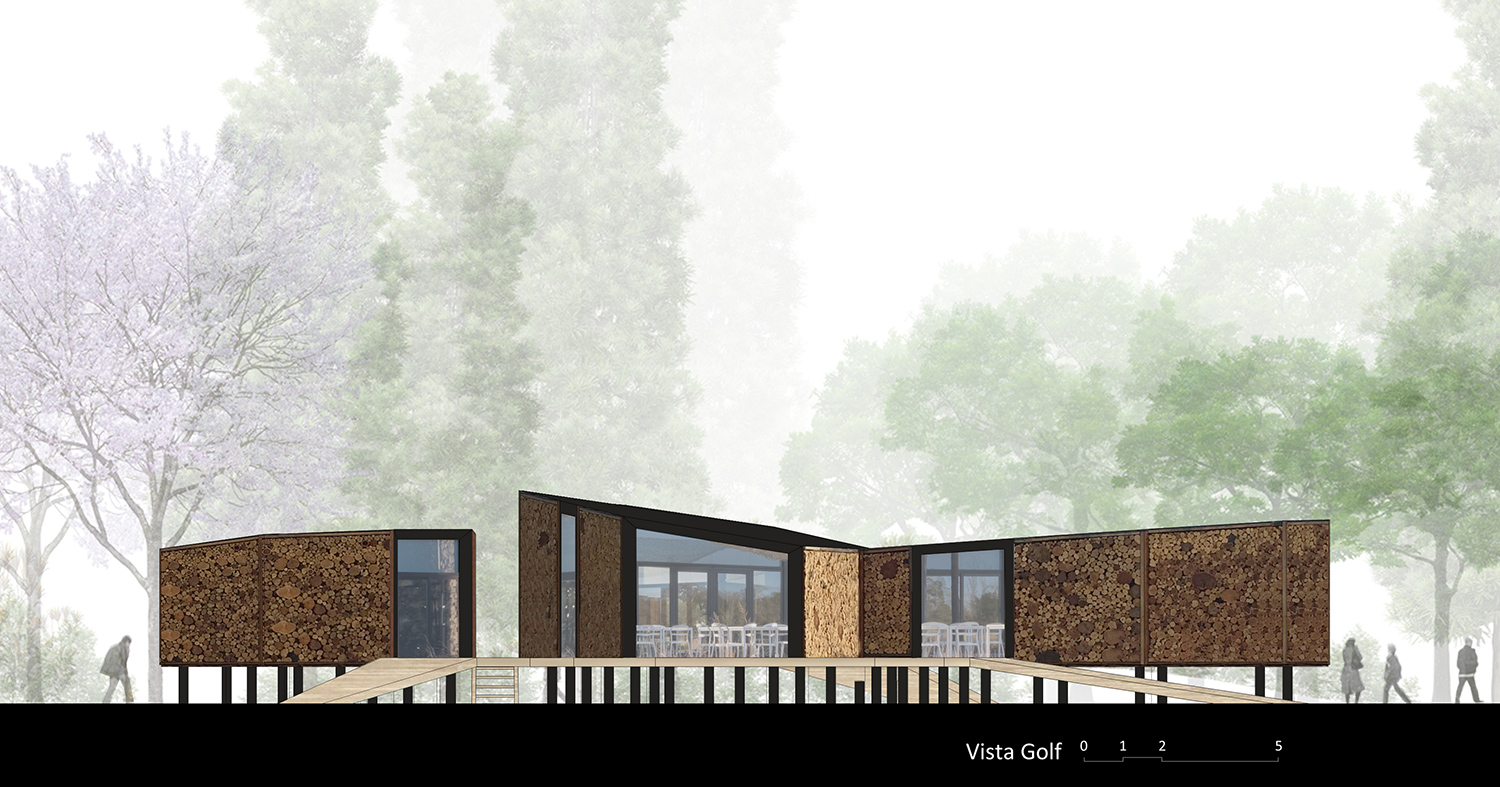
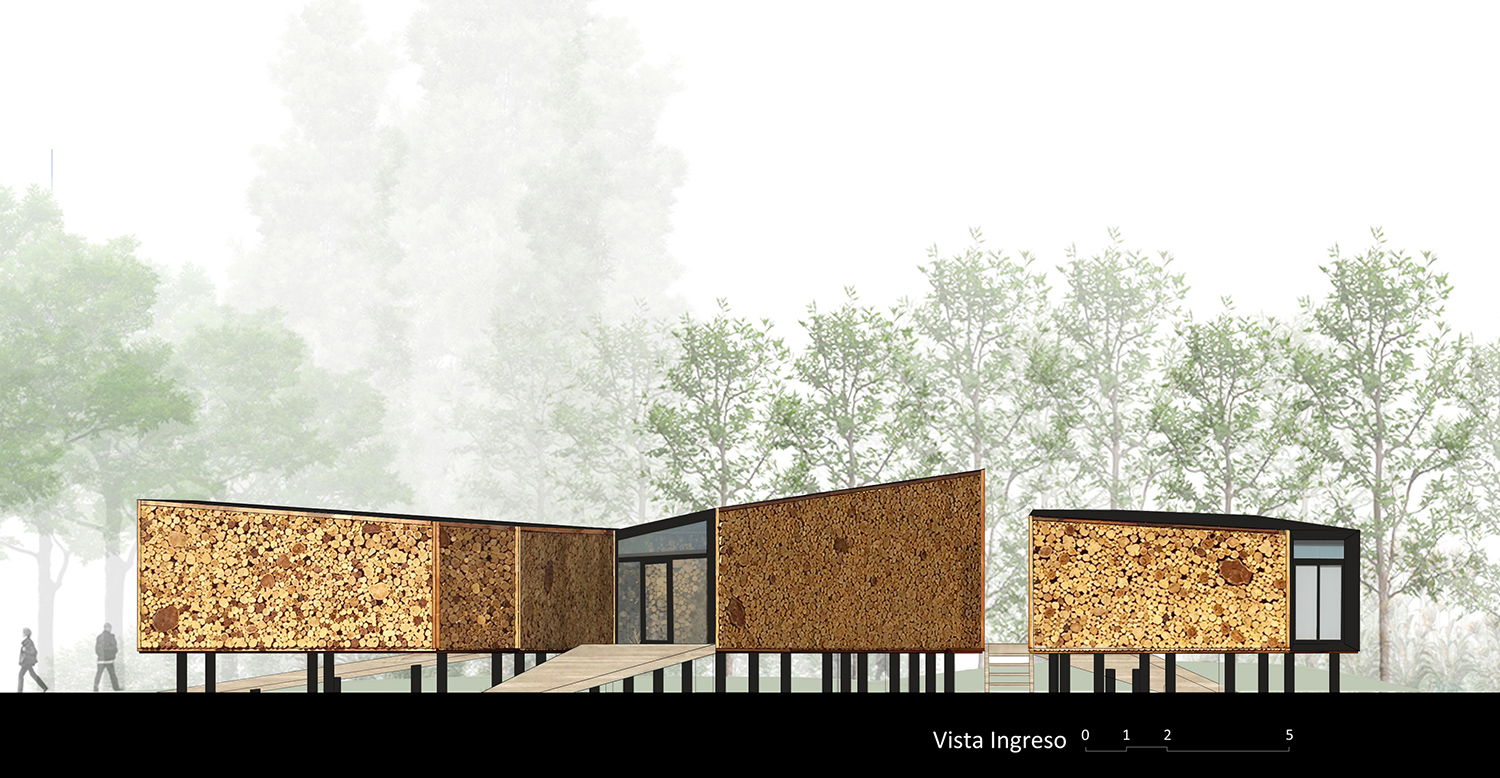
project info:
architects: morini arquitectos (lucio morini + sara gramatica + jorge morini)
location: pueblo estancia la paz, córdoba, argentina
project manager: julia garayoa
team: arq. daniel guerrero, arq. luciano bonelli, arq. florencia tremsal, arq. juan pablo ramirez
sculptor: victor barrera
cabinet maker: tihomirkourdov
landscape design: ernestina anchorena
area: 175 sqm
terrace and ramp area: 150 sqm
project year: 2014-2015
photography: gonzalo viramonte
Save
